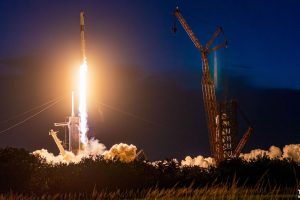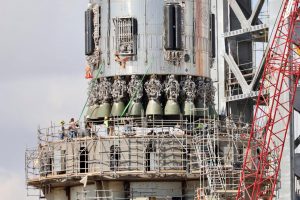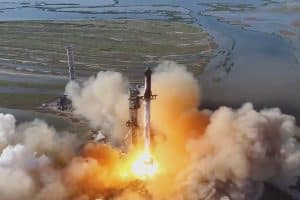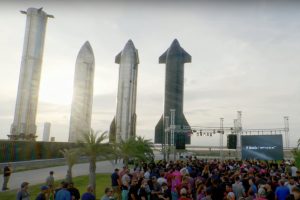In a classically spectacular fashion, a SpaceX Starship prototype has successfully touched down in one piece for the first time ever, only to explode minutes later after catching itself on fire.
Rolled from SpaceX Boca Chica Starship factory to test and launch facilities just a mile down the road on January 28th, Starship SN10 lifted off just five weeks later – the fastest factory-to-launch flow yet. The speed of that turnaround was mainly made possible thanks to an exceptionally smooth test campaign, passing cryogenic proof and static fire tests after only a few attempts.
Prior to its second launch attempt, Starship SN10 automatically aborted a few seconds prior to its first attempt after the rocket’s flight computer determined that its three Raptor engines were producing more thrust than expected. Within half an hour of the abort, CEO Elon Musk took to Twitter to reveal the cause and stated that SpaceX would be tweaking the flight software’s thrust limits and recycling for another shot at launch around two hours later.
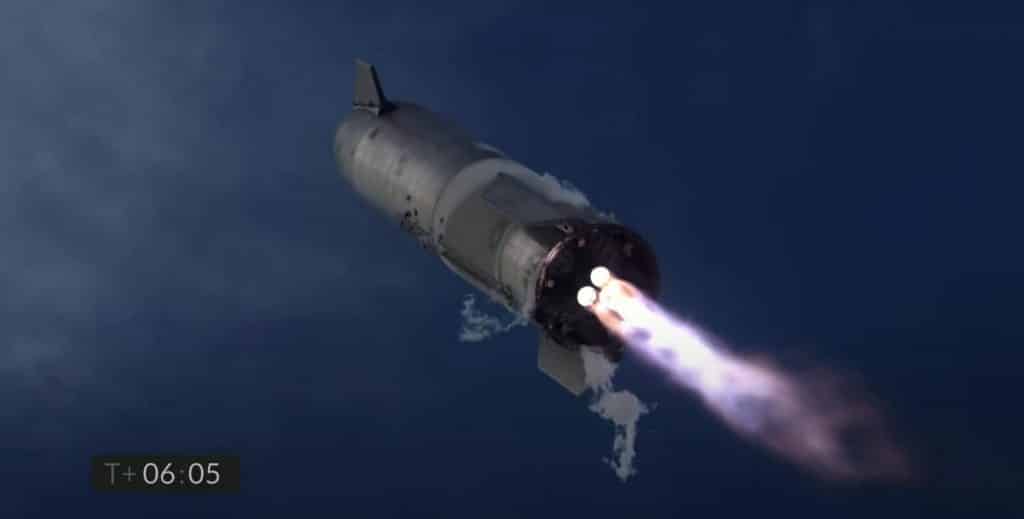
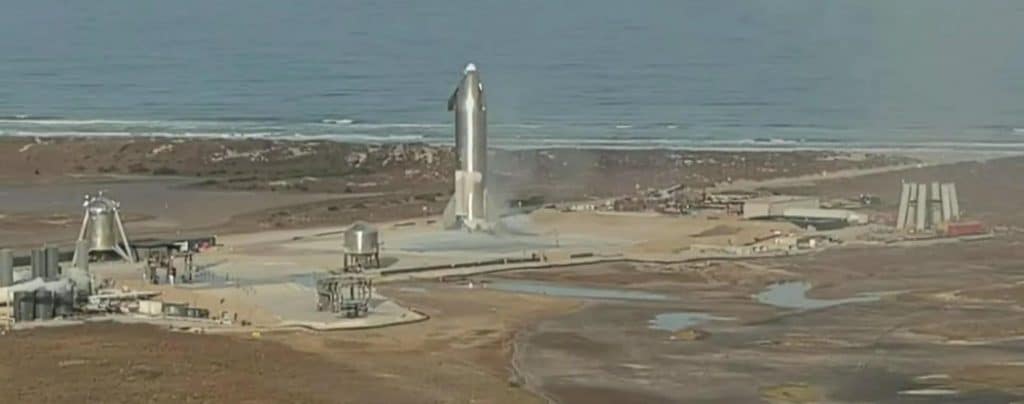
Up to the last 20 or so seconds of the 6.5-minute flight test, Starship SN10’s launch debut was virtually identical to Starships SN8 and SN9, both of which made it just one or two dozen seconds away from a soft landing. However, after SN9, SpaceX optimized the landing process to add additional redundancy, meaning that SN10 reignited all three of its Raptor engines – instead of just two – for its flip and landing burn.
Exactly as planned, SN10 fired up those engines, autonomously analyzed their performance, and then shut down two Raptors to leave the best-behaving engine to complete the final landing burn. Unlike SN8 and SN9, that maneuver went about as well as it could have, nearly slowing SN10 to a hover with one (seemingly) healthy engine to take it the rest of the way to the ground.
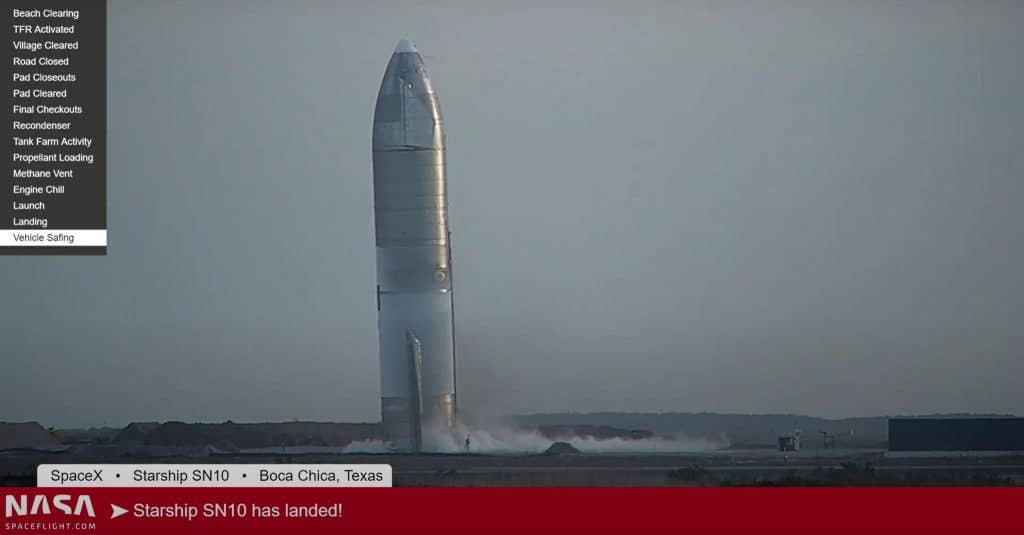
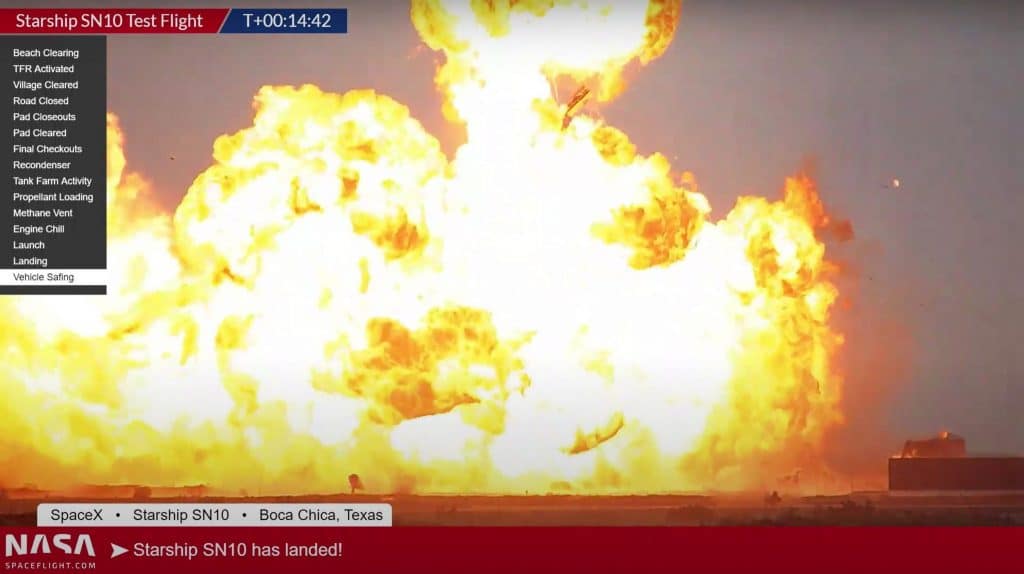
After all that heroic effort and for the first time ever, Starship SN10 proceeded to touch down in one piece. Through the eyes of a drone hovering far away from the launch complex, the landing couldn’t exactly be considered ‘soft,’ however, and SN10 impacted the landing zone with some substantial momentum – likely far too much for its tiny legs to handle.
However, more importantly, SN10 appeared to ignite one or two of its own gaseous oxygen or methane vents, triggering a fire that remained visible until well after the hard – but intact – landing. From official and unofficial views of the landed vehicle, Starship SN10 had a significant lean and appeared to have no more than a few inches to a foot of clearance between its aft skirt and the concrete pad. Remote-controlled firefighting spigots were able to extinguish any external sign of fire but that lack of clearance may have prevented the water from doing much inside the skirt, ultimately dooming Starship SN10.

Regardless of where exactly that fire ‘broke through,’ so to speak, the original cause of the fire – accidentally igniting a vent plume – is unlikely to be a hard problem to fix, and it’s safe to say that SN10’s intact landing is an extraordinary success for SpaceX. In its official webcast, SpaceX engineer John Insprucker confirmed that Starship SN11 is all but complete and could roll out to the launch pad to pick up where SN10 left off almost as soon as it’s safe to do so.
Original Publication by Eric Ralph at Teslarati.


